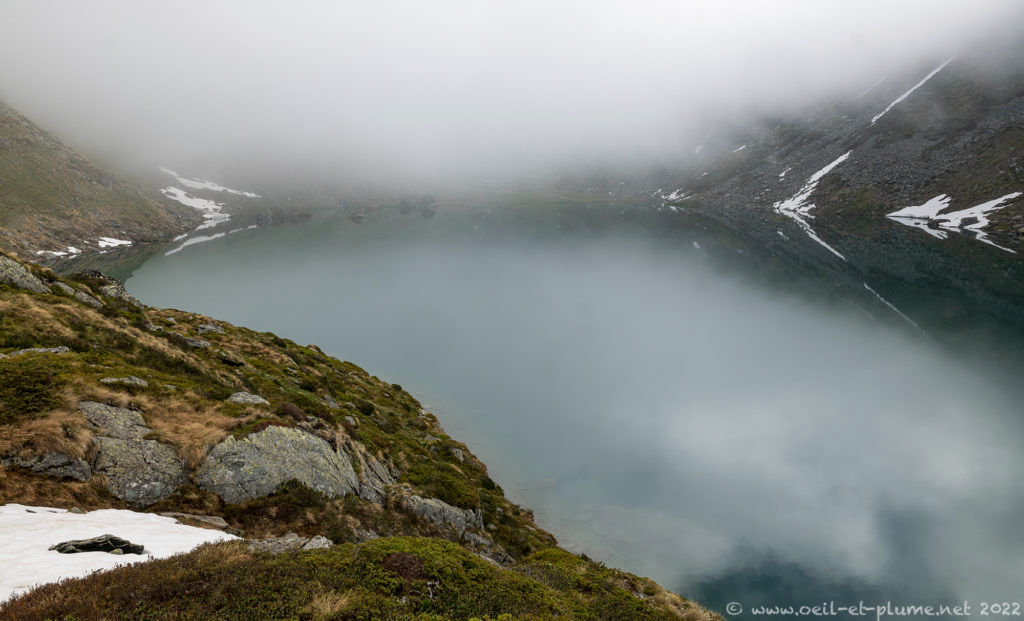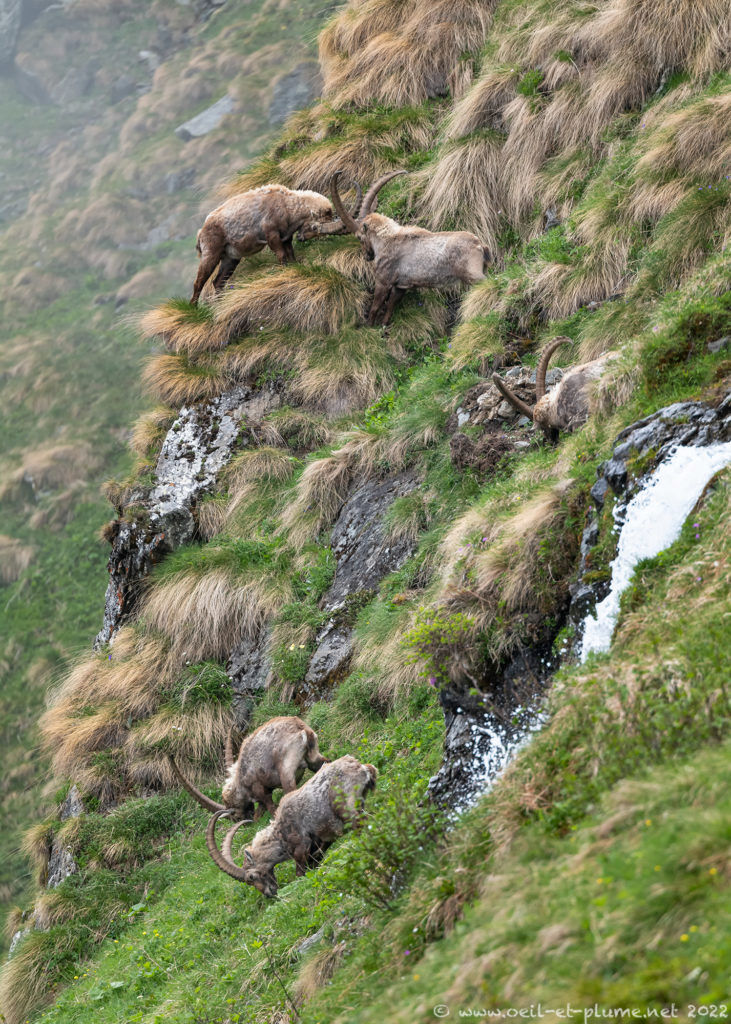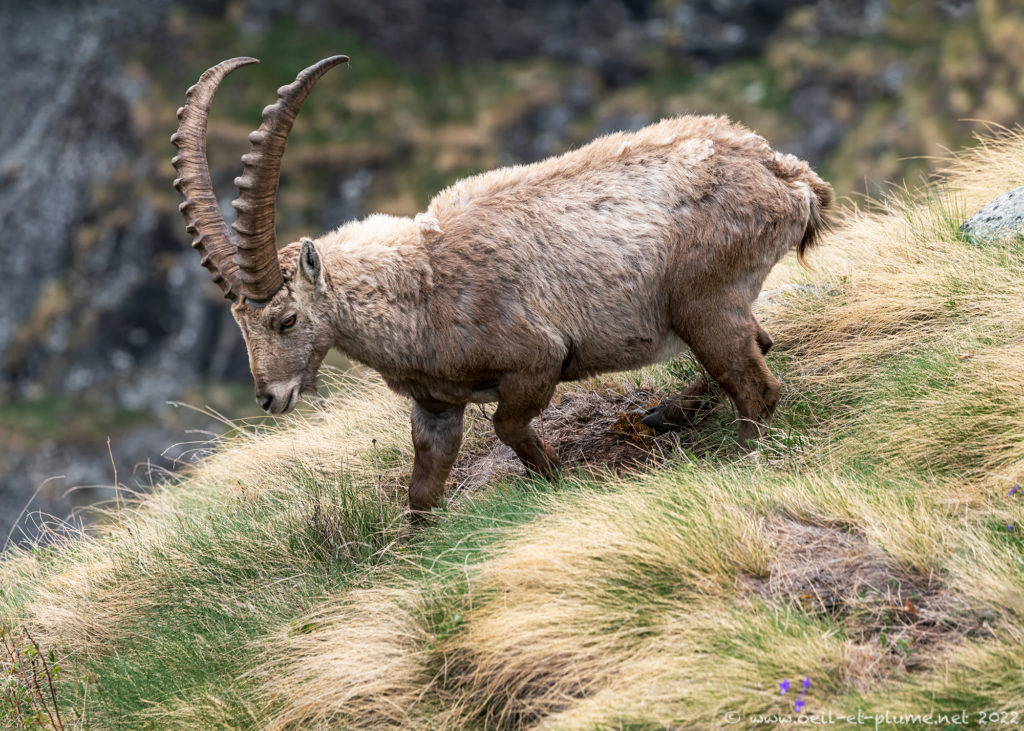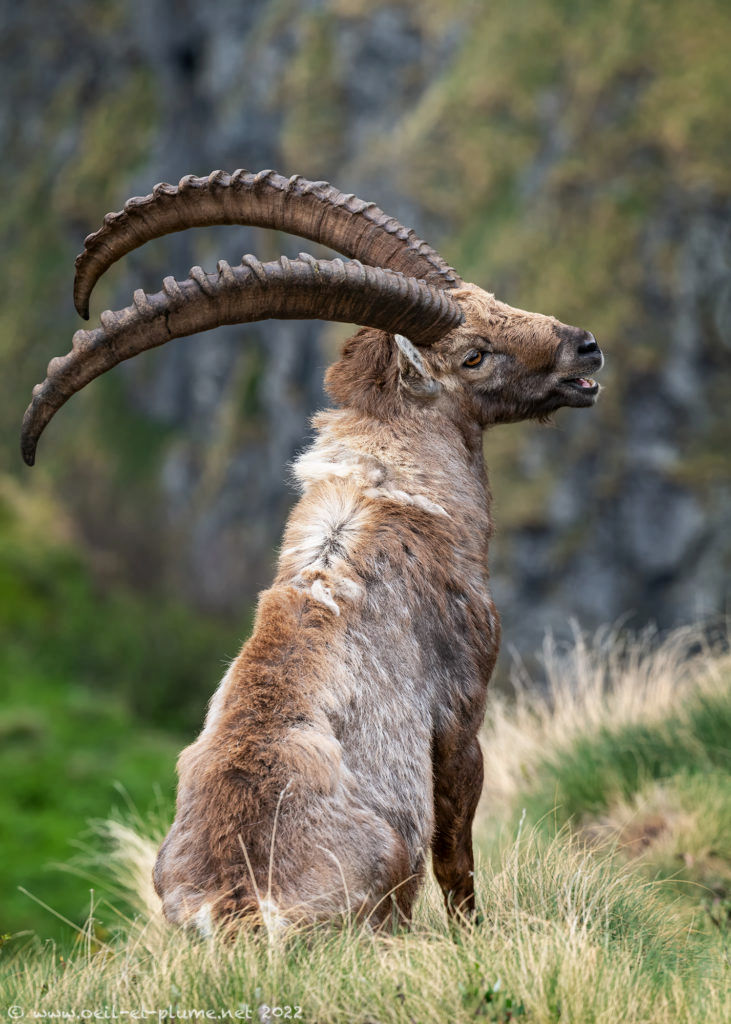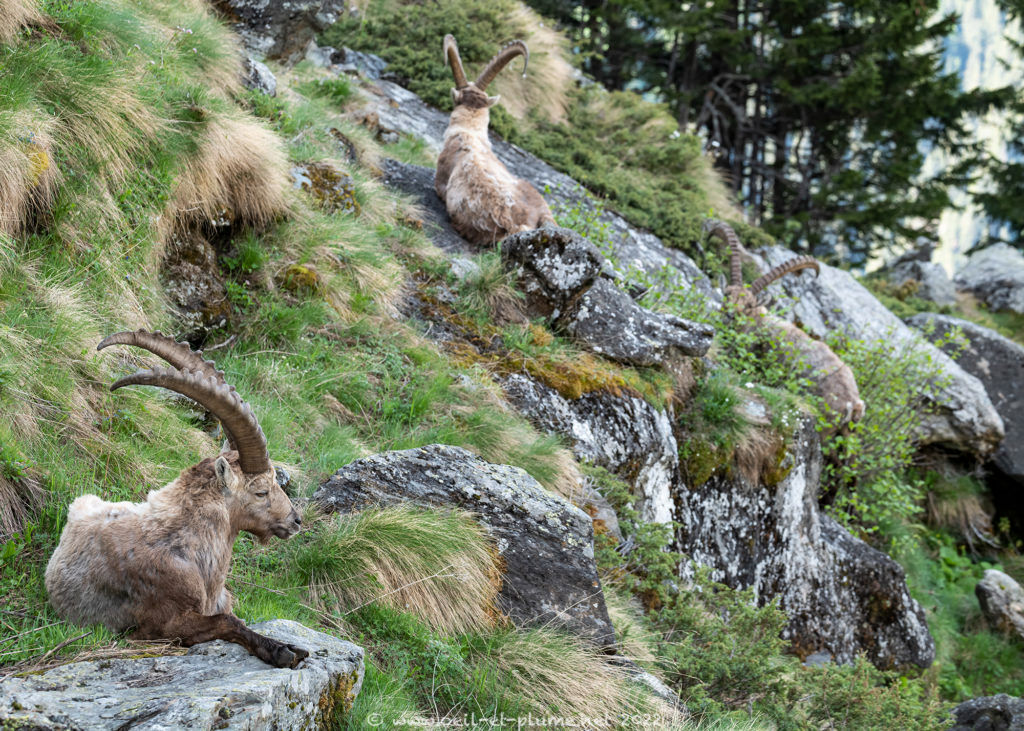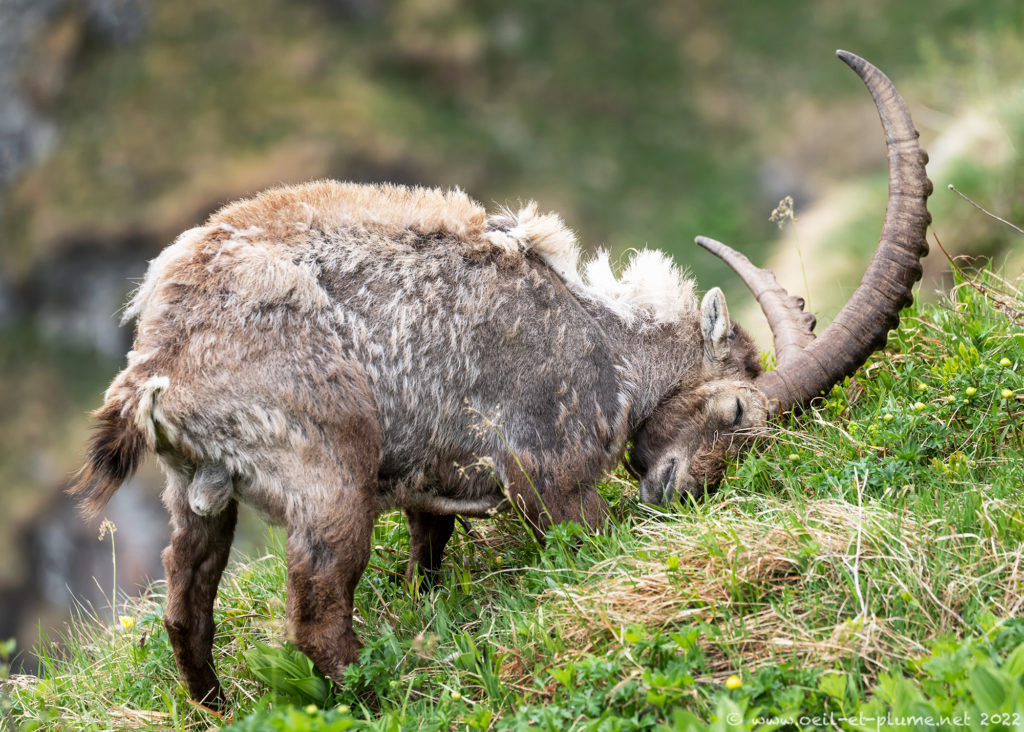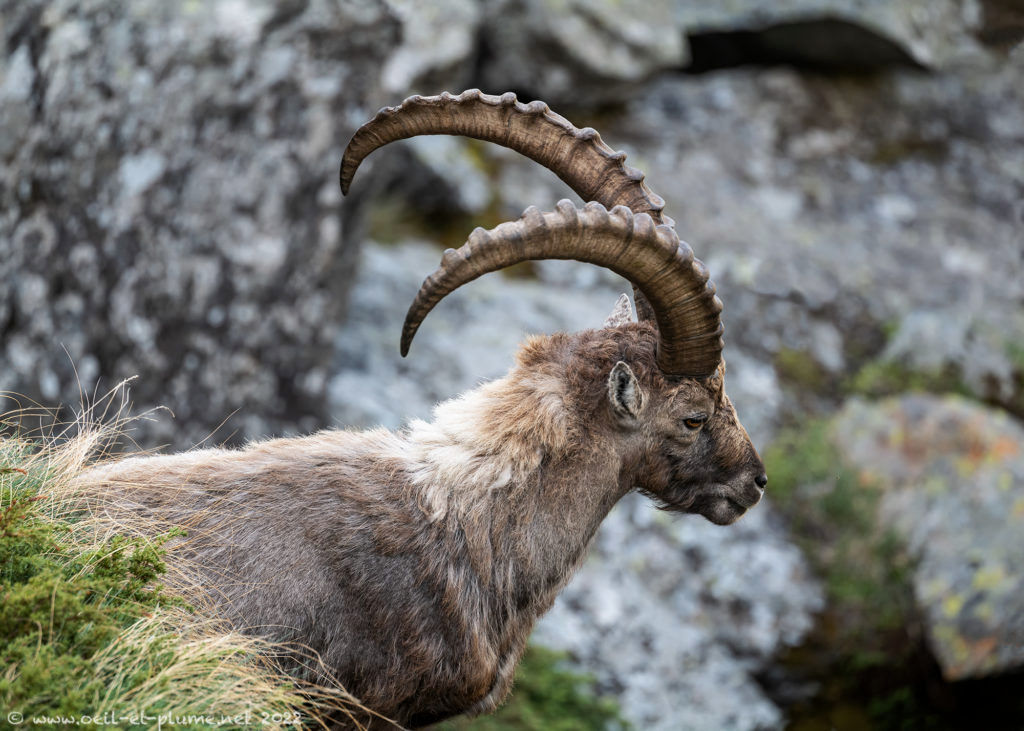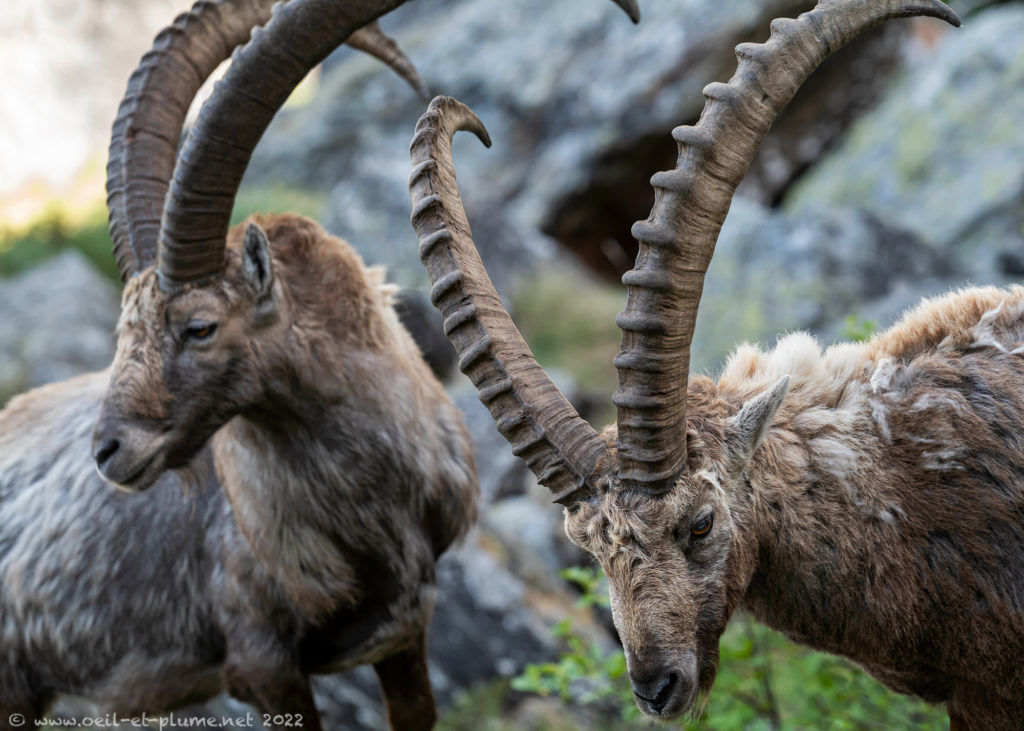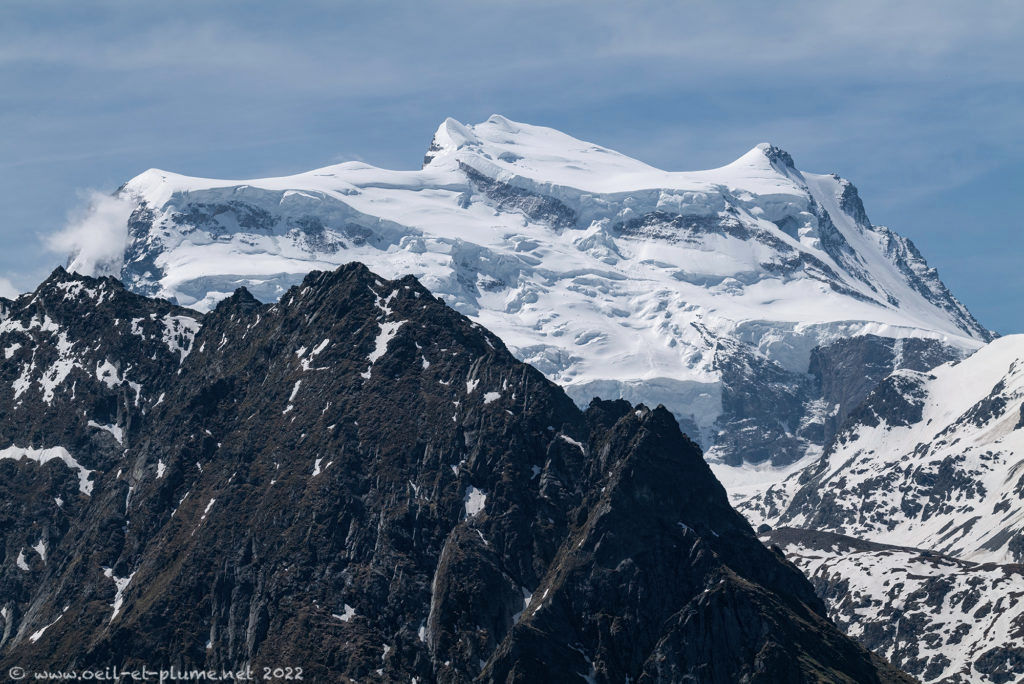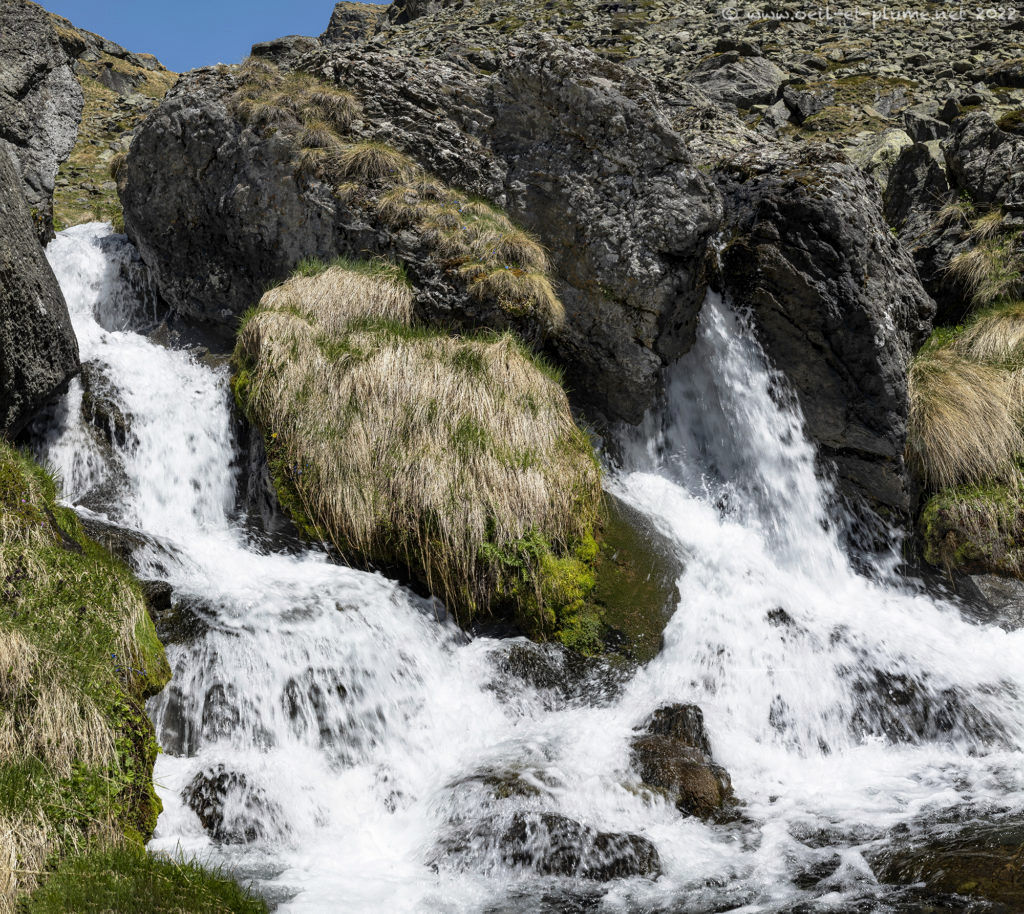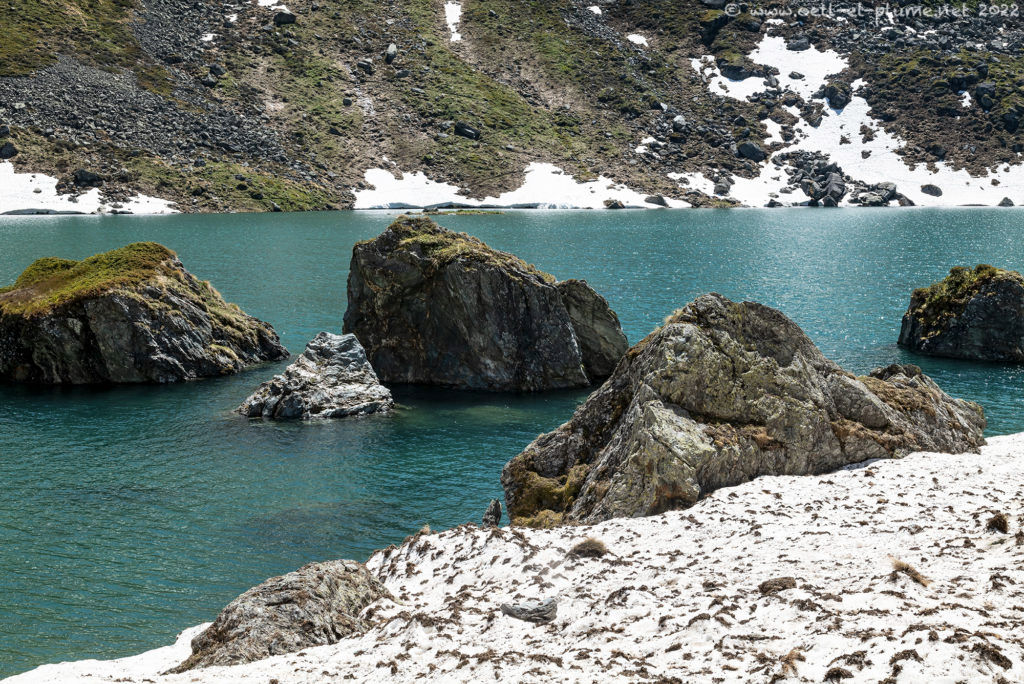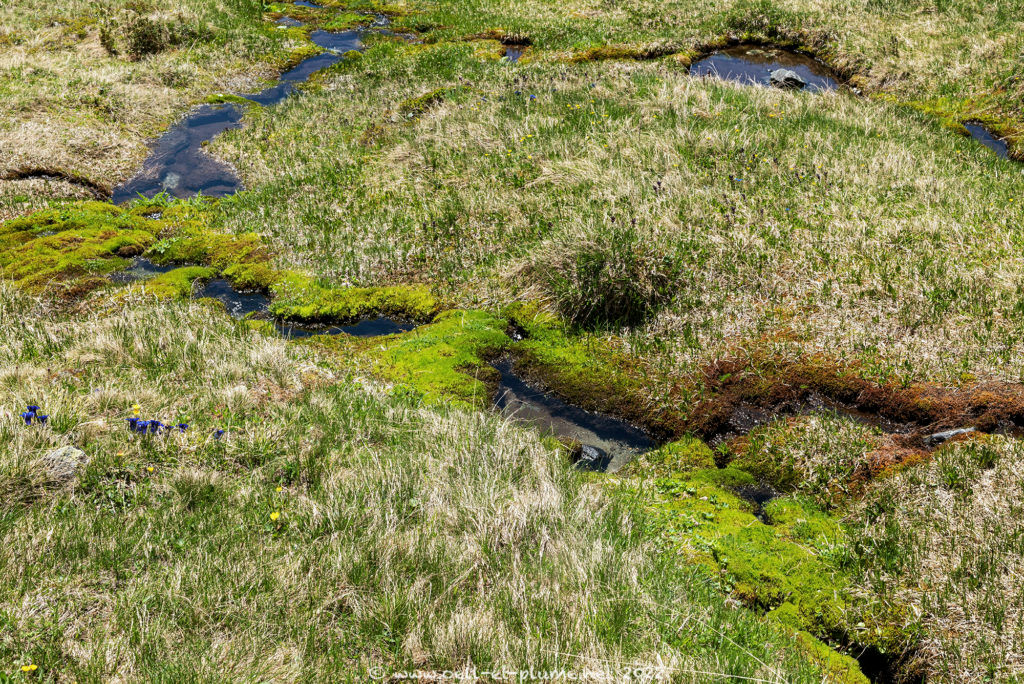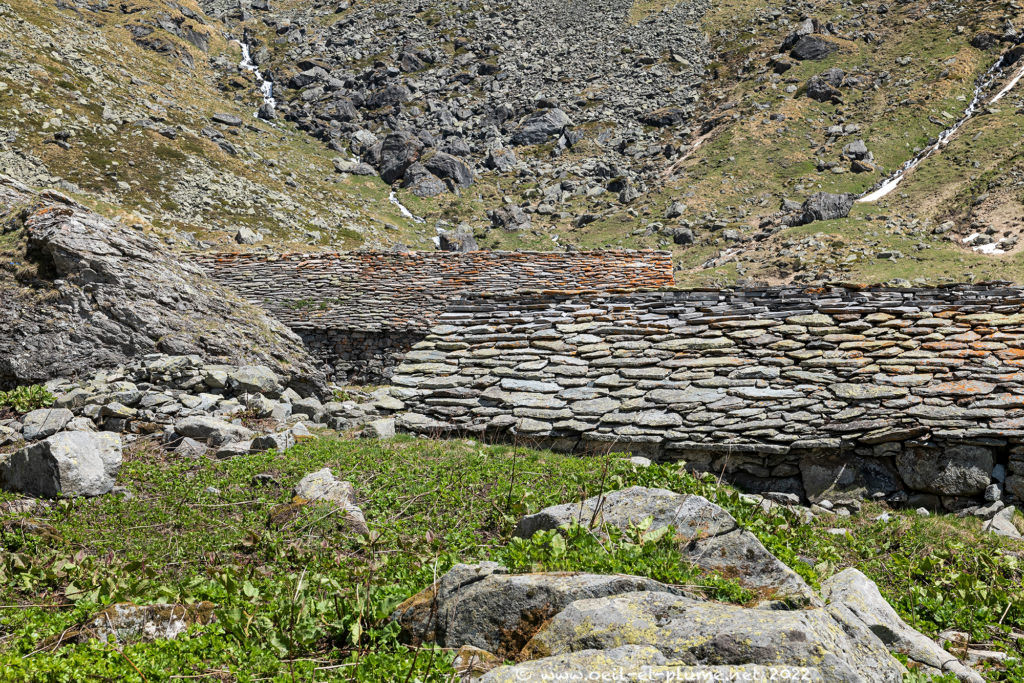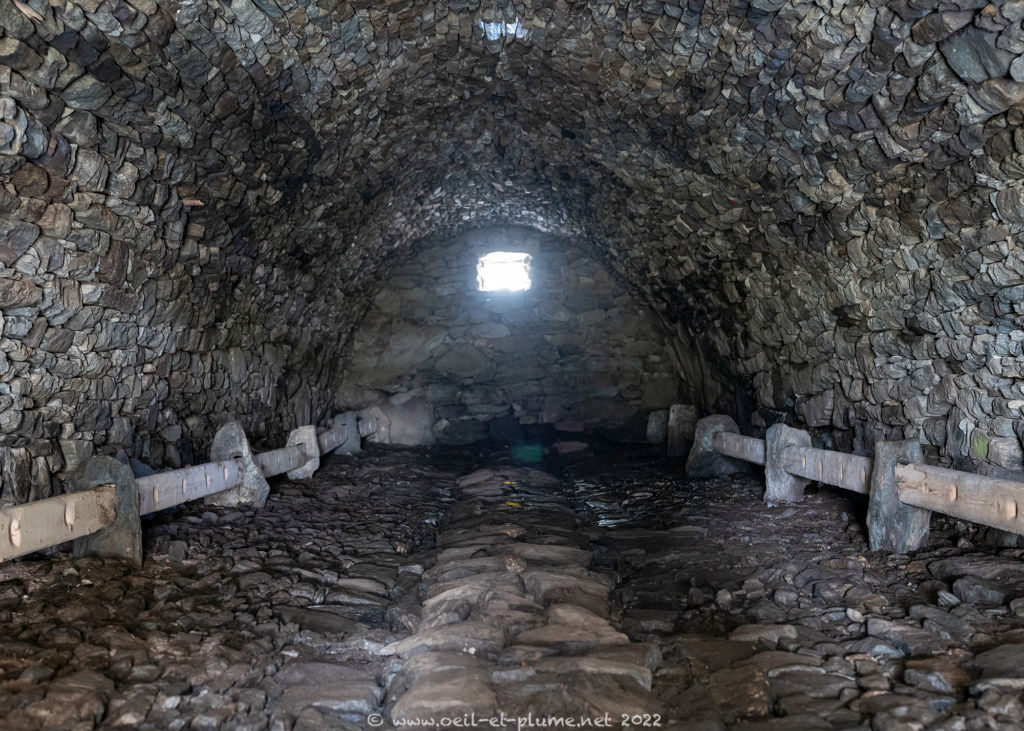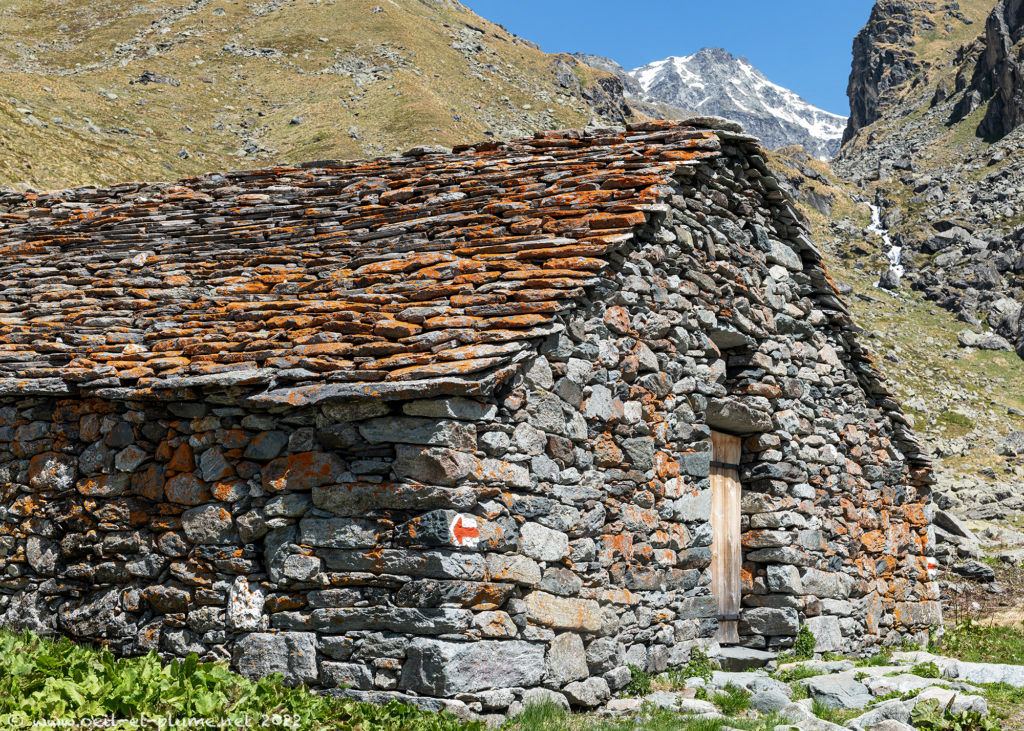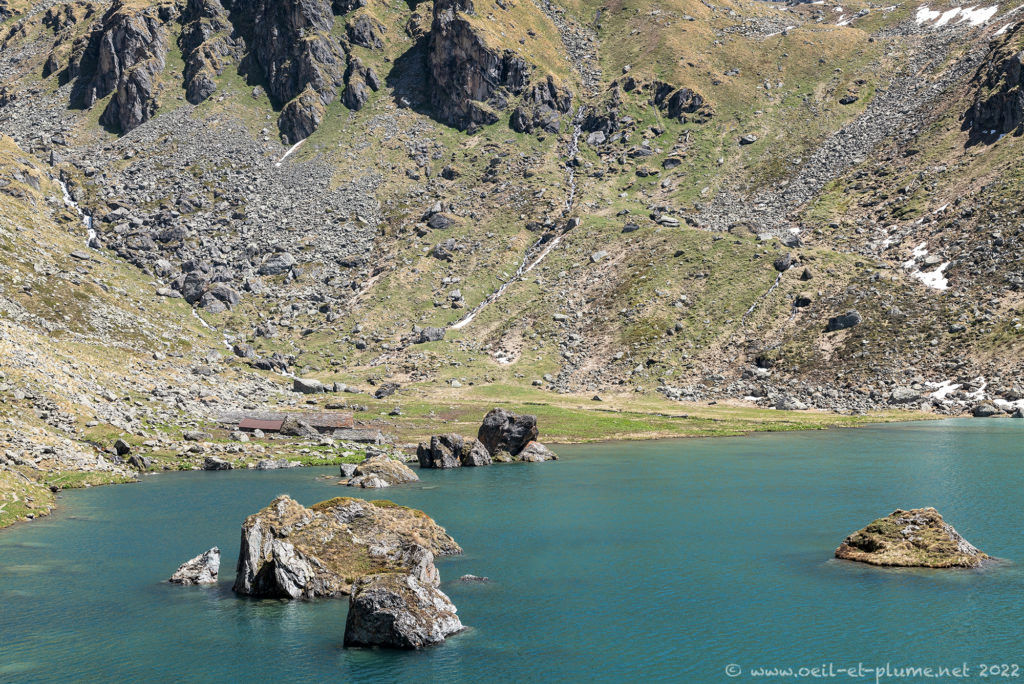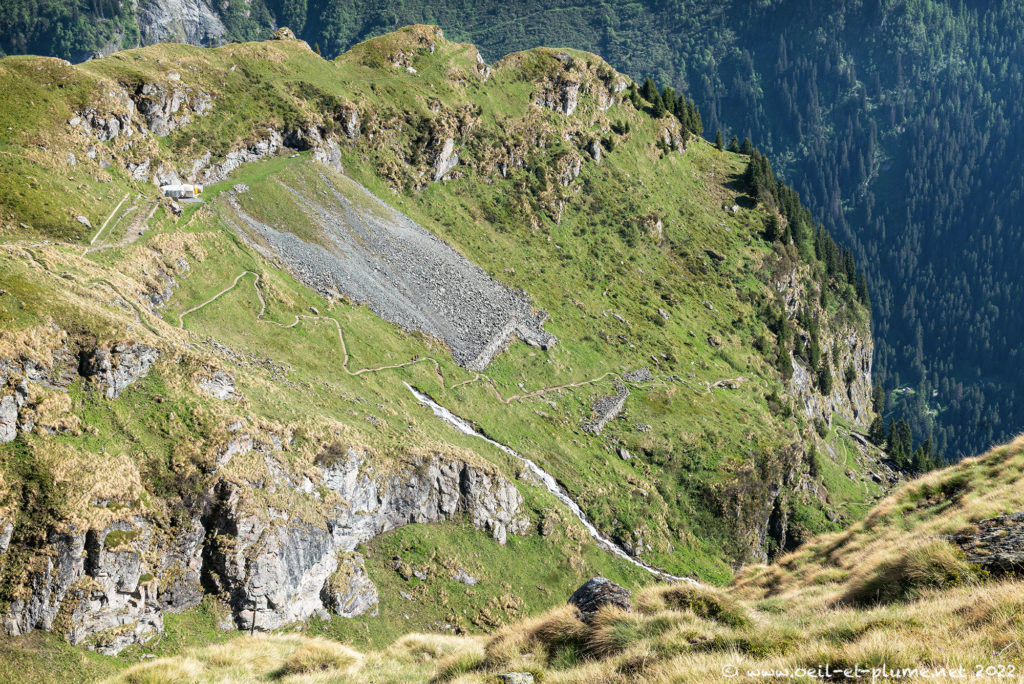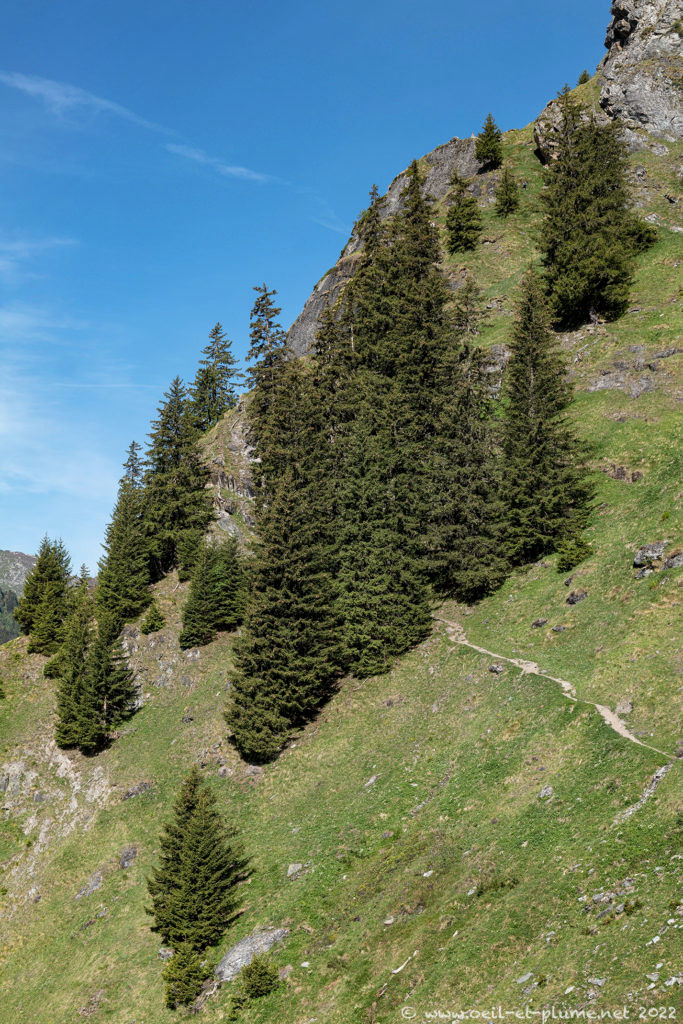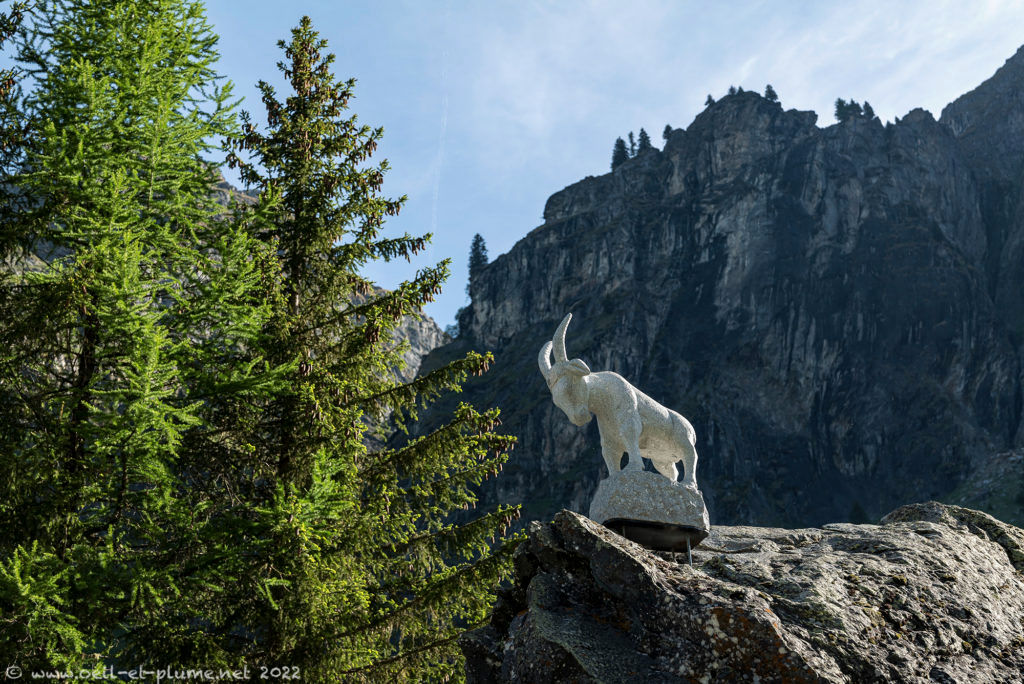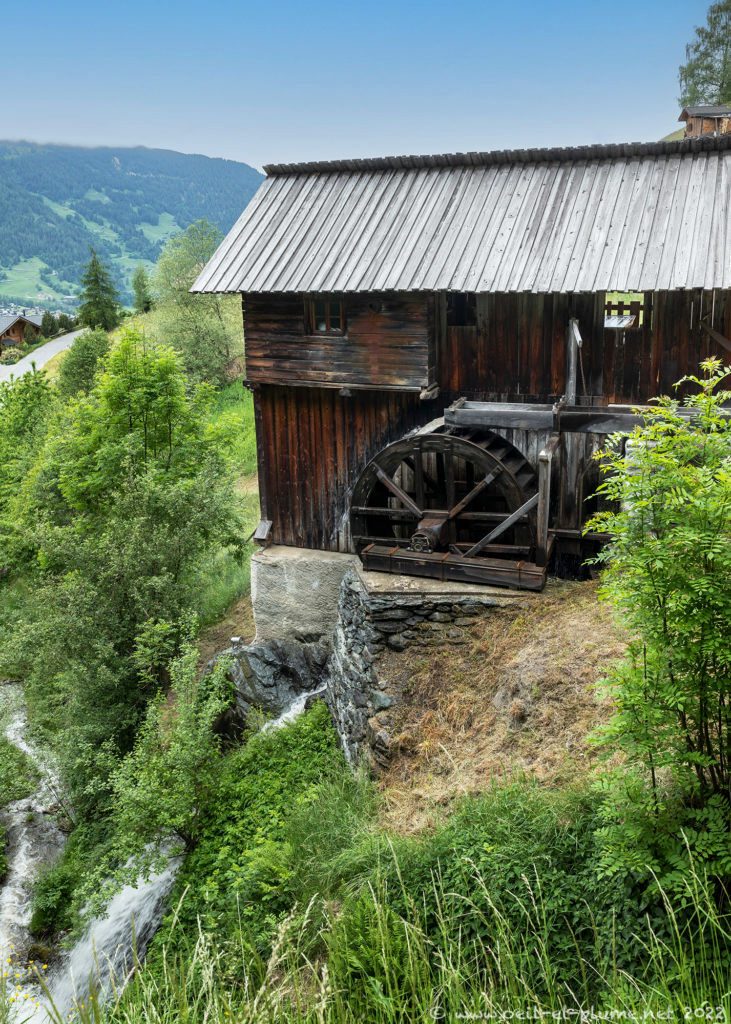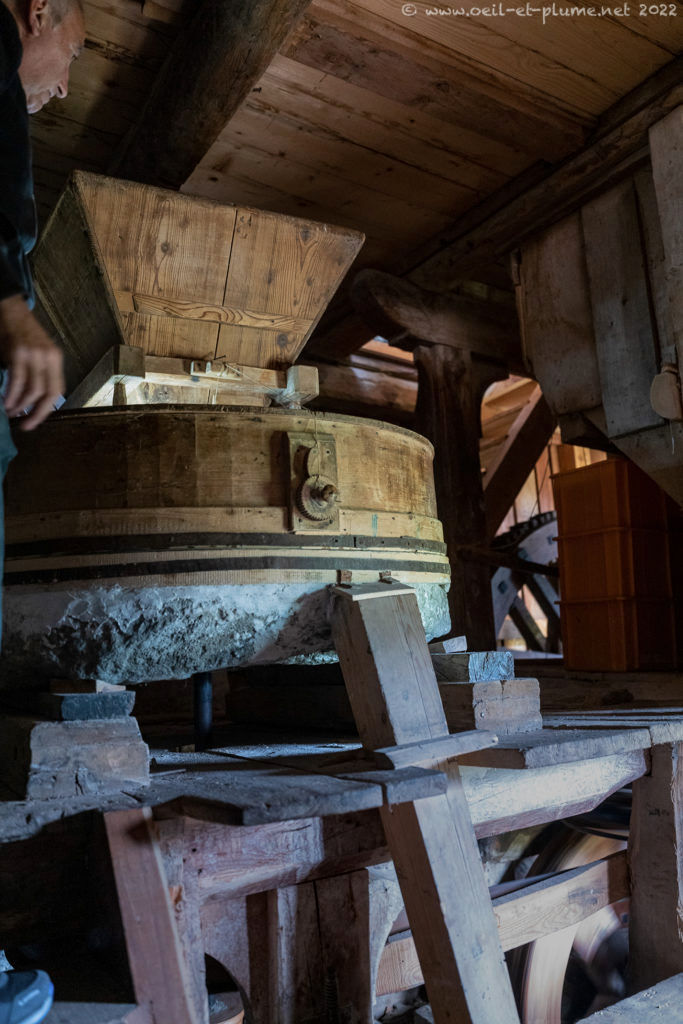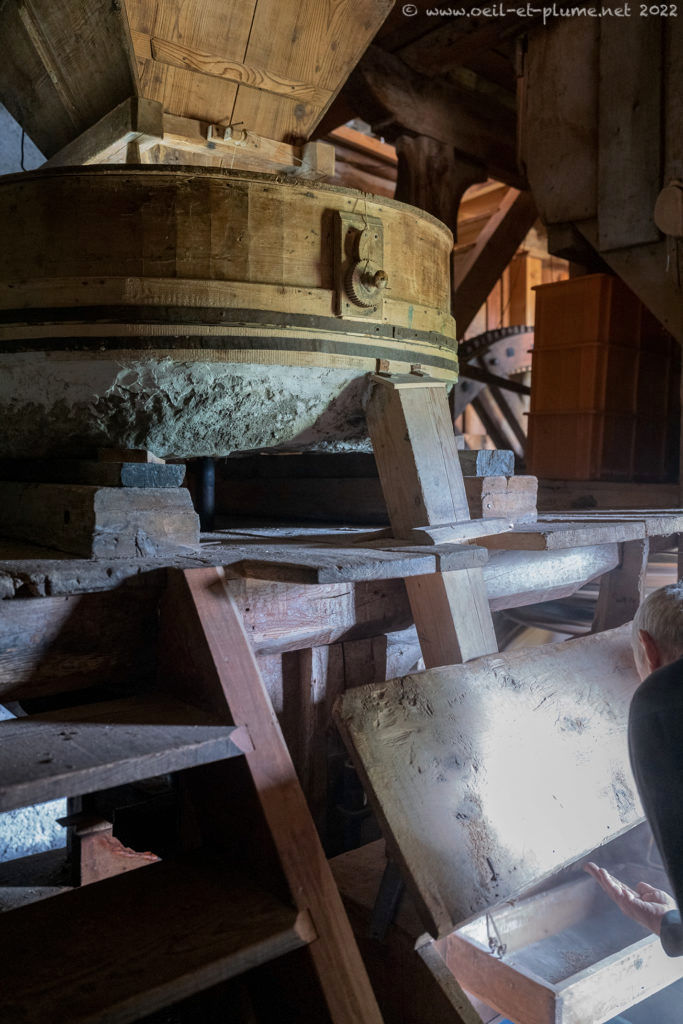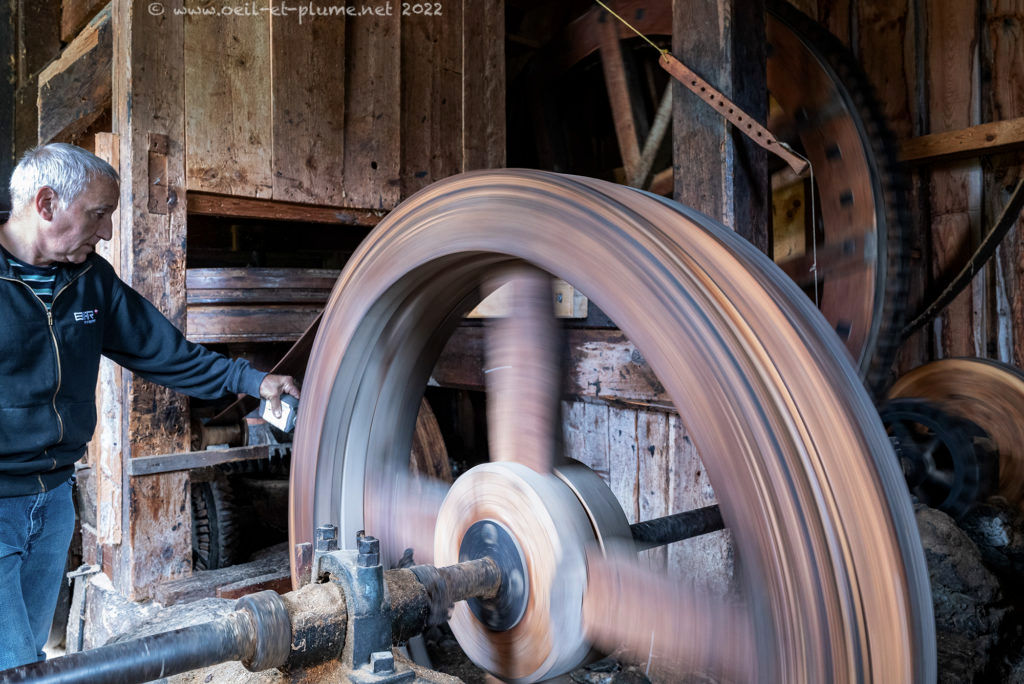At dusk, swathes of soft sunlight sculpt the Grand-Combin massif anew, sketching delicates lines and shapes in the gigantic piece of iced marble. Lower, the morning light unveils a thick fog napping the valley bottom. The imposing but elegant mountain scape floats in the clouds, high in the sky.
The day before, the Grand-Combin mountain claimed two human lives, out of the eleven alpinists who were caught in a major serac (ice pinnacle) fall on the normal ascent route. Despite all possible safety measures, mountaineering remains a risky endeavour.
While admiring the sunrise over the Grand-Combin, I remember about the hunter and poacher in the Valais who is said to have killed the very last ibex in the Alps in the 19th century. According to some sources, the event took place in the heights of Arolla village in the Hérens valley in 1809; other sources date the event later in the 19th century. Anyway, the trophy killing happened in my native Valais region – maybe even in such stunning mountain scape. I feel sad about human blindness and greed.
Louvie
I am precisely visiting a small ibex natural reserve located in Louvie, above the Bagnes valley in Valais – only a couple of kilometres away in bird’s eye view from Arolla. The beautiful foggy atmosphere nurtures a certain melancholy in my mind, that dissipates gradually alongside the fog. I am here to enjoy close encounters with alpine ibex as Louvie is a natural reserve for them.
Alpine ibex saga
A few hours later, my wish becomes rapidly true, morphing my sad mood into a febrile euphoria: a groups of male ibex is just there, moving and jumping with an incredible agility in the steep slopes covered with slippery long grass. Two of them engage into a horn-to-horn confrontation that resonates loudly all around. At first, it is rather hard for me to assess whether this is real fight or play. In any case, the scene is wild, genuine and beautiful. Ibex are really at home in those mountains.
The scene is typical of the season, as male and female ibex live mostly apart throughout the year, a part from the mating period. In spring time, male are keen to redefine their social hierarchy through intimidation or fighting, whose outcomes will define their respective access to the group of females later in the year.
After a patient and careful approach in the difficult terrain, I manage to create close-ups of a beautiful specimen. The animal obviously plays with me, faking no interest about my presence and like posing purposefully like a seasoned photo model.
Ibex (capra ibex, steinbock, bouquetin) lives the Alps since thousands of years. The wild goat became increasingly subject to hunting starting from the Middle Age. Fur, horns, flesh and organs of the ibex were then abundantly used in many ways by local residents. In the 18th century, fire arms proliferation, periods of food scarcity, traditional medicine and popular beliefs accelerated the decrease of the ibex population. In the late 18th century, the specie was close to extinction.
Mid-19th century, the Italian king Victor Emmanuel II established a royal reserve in Gran Paradiso in Aoste Valley monitored by professional gamekeepers to ensure not only the survival of the wild goats but also to satisfy his fondness for hunting. Grand Paradiso constituted the alpine ibex’ last sanctuary in the following decades.
Wait, there is another group of male ibex down here: most of them are also on fighting mood. Their movements are like orchestrated by the invisible hand of a ballet director – alternating tense stand-stills, quiet steps, spectacular jumps, as well as head and horn stark punches.

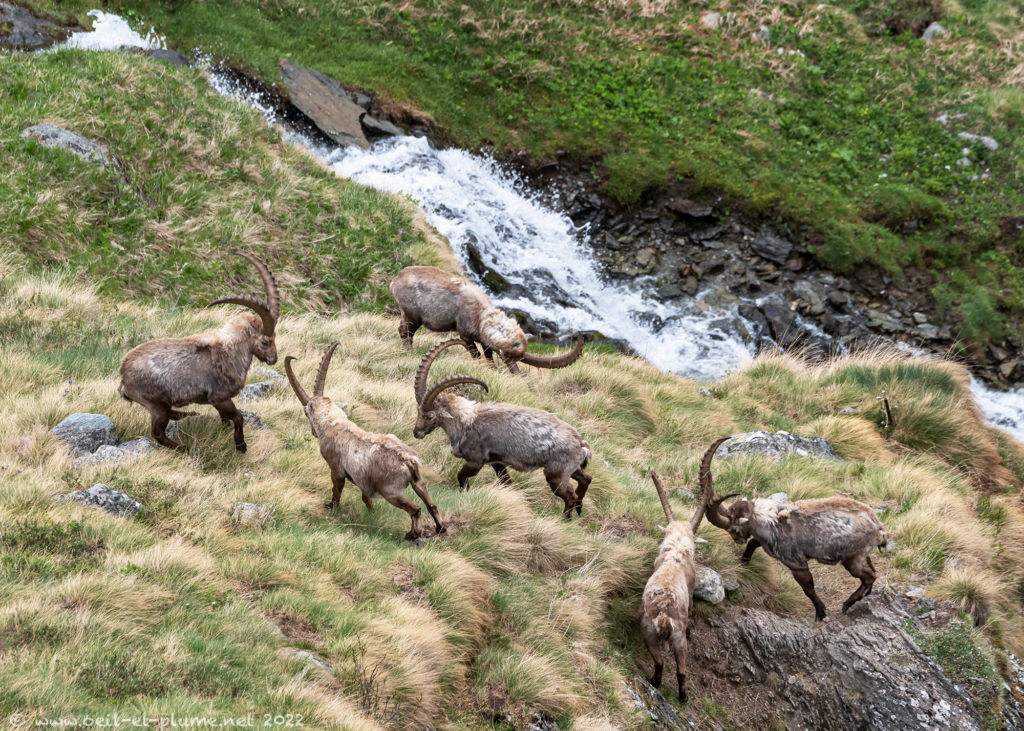
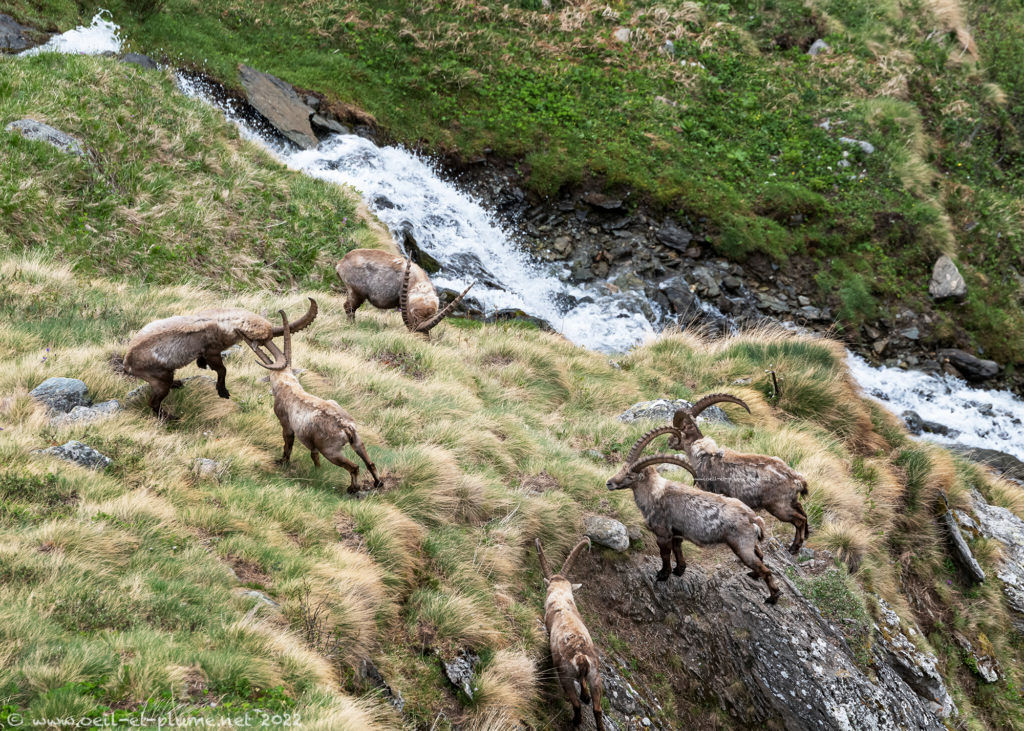
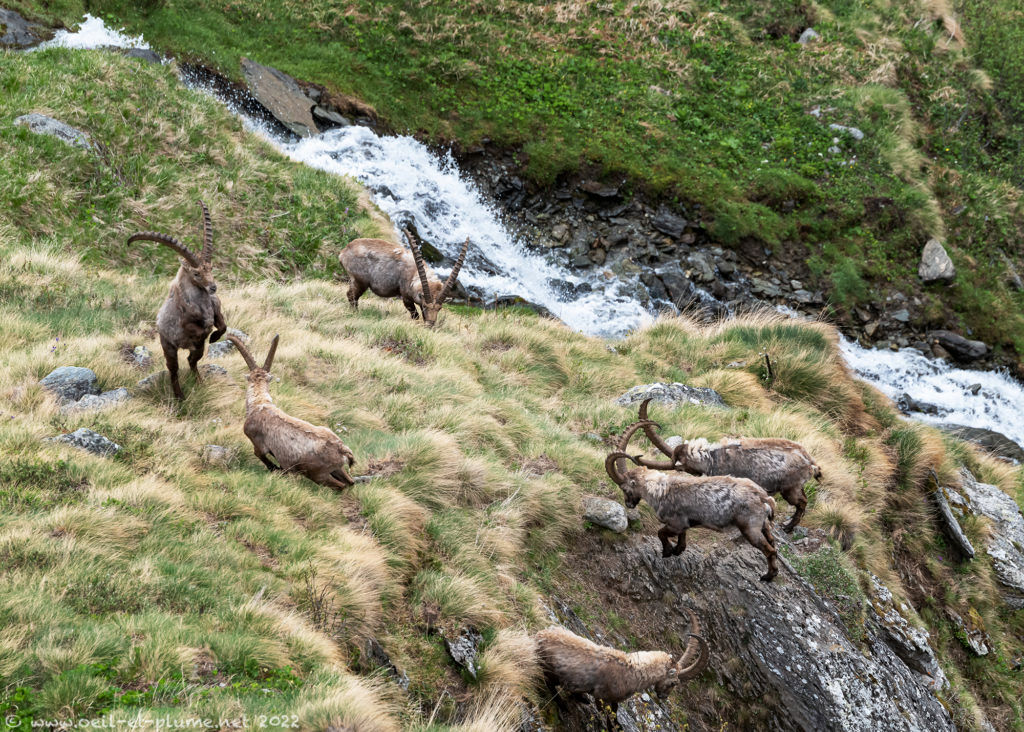
A while later, I get closer to the group of male ibex after their spectacular choreography. As the wild goats are now resting, they are more approachable. My camera thanks them heartily for that. Many of them are now in their sloughing period, shifting their thick and dark winter fur against a lighter robe ahead of the summer season.
Ibex were successfully reintroduced in the Swiss Alps early 20th century. Interestingly, they were looted in the Gran Paradiso reserve and smuggled through the Italian-Swiss border. Swiss authorities channelled first several official diplomatic requests to obtain a small number of ibex from Gran Paradiso; the last one was expressed by the Swiss President to Victor-Emmanuel III in 1905. All of them were turned down by the Italian king.
Switzerland then shifted for underground techniques. A famous local poacher residing in Aoste Valley was discretely contacted. In 1906, he crossed the Alps carrying two small ibex looted in Grand Paradiso through a secondary alpine pass called Fenêtre de Durand. He sold them in Martigny for a little fortune. Until 1939, several dozens of ibex were smuggled from Italy into Switzerland. The traffic developed despite hefty financial and imprisonment penalties faced by the smugglers in case they would be caught by the Italian authorities.
On their side, Swiss authorities paid very substantial service fees to acquire illegally those ibex from Gran Paradiso. They also took much care about their careful and successful reintroduction in various parts of Switzerland. Nowadays, alpine ibex in Switzerland face no more predators but a few wolves and many more hunters.
Ibex hunting is now strictly regulated in Switzerland. Despite about 1.000 animals killed yearly through hunting, some 17.000 ibex live in the Swiss territory. The challenge is more genetic, as the entire ibex population in Switzerland as well as throughout the Alpine range stems historically from Grand Paradiso. Consanguinity constitutes a major source of illness and death for ibex.
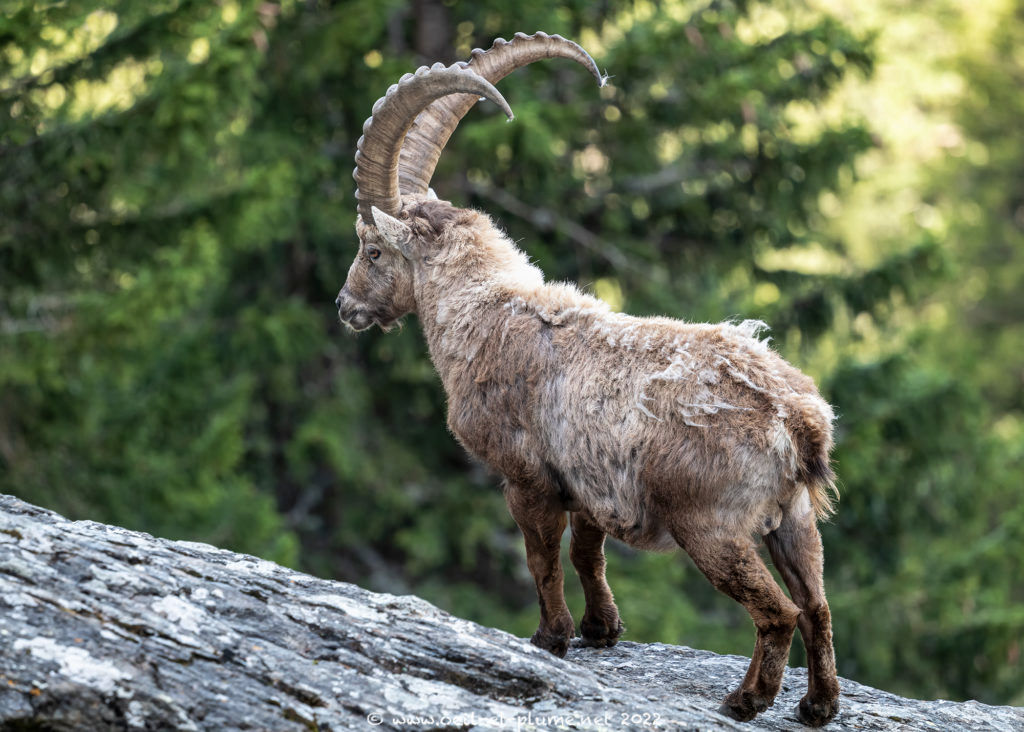
Looking for female ibex, I hike higher up in the mountain, on the other side of the Louvie lake. Out of precaution, ibex and particularly females, like rocky areas difficult to access along the snow line. Spotting a handful of wild goats resting in the afternoon light, I progress cautiously into a mass of fallen rocks. It takes me ages to approach the group which keeps moving further. Finally, one of them agrees on an audience and exclusive portrait session, lucky me.

The ibex is now comfortably seated on a terrace facing the grandiose Grand-Combin massif. We stay a long while in a fascinating eye-to-eye dialogue. On stand-still, I whisper nice words to introduce myself and to entertain my interlocutor. My low-voice talk is apparently well received as the ibex feels increasingly comfortable with my presence.
The audience is now over. I turn back and descend back to the lake. There is plenty of water all around, including in melting snow patches. The dark-green water of the lake surface fits nicely in the imposing mountainous amphitheater venture, as an emerald set in a rocky mount.
Louvie provides also interesting insights on how local residents lived and worked there during the summer season. In a scheme typical of alpine seasonal transhumance, cows escorted by a couple of men and dogs used to ascend to Louvie amphitheatre from various villages located further down in the Bagnes valley and leave in autumn before the first snow. Cows would take benefit of the nutritious grass to produce large quantity of milk to be transformed into cheese by their cowboys.
I feel blessed by my emotion-rich experience in Louvie. I bid farewell in the hut where I stayed overnight and descend quickly the steep slopes until the valley bottom.
In Fionnay village, my last sight toward Louvie crosses a petrified baby ibex which seems to defy me. I will return, don’t worry.
Sarreyer’s water mill
I pause my drive back home in Sarreyer village where a 19th-century water-powered mill was recently renovated and put again in service. Local residents, old as young, are quite euphoric about the inauguration. Technicians perform a last-minute check on the venerable machinery steered by a running water stream. Not just alpine ibex, but also local traditions can be successfully reintroduced or sustained in the Alps.
Let’s review some lessons proposed by the history of ibex in the Alps. Mid-19th century, the Italian king Victor-Emmanuel II saved paradoxically the alpine ibex specie from extinction due to his passion for hunting. Early 20th century, one of his successors Victor-Emmanuel III was depleted under the carpet of some of the ibex living in Italy’s Gran Paradiso out of his reluctance to help repopulating the Swiss Alps.
The ibex looting constitutes quite a surprising and audacious move by the otherwise very law-abiding Switzerland. The latter can argue that the ibex population in Gran Paradiso continued prospering eventually. It is also worth recalling here that animals are not human beings’ private properties, even if the latter tend to claim so.
Cheers,



